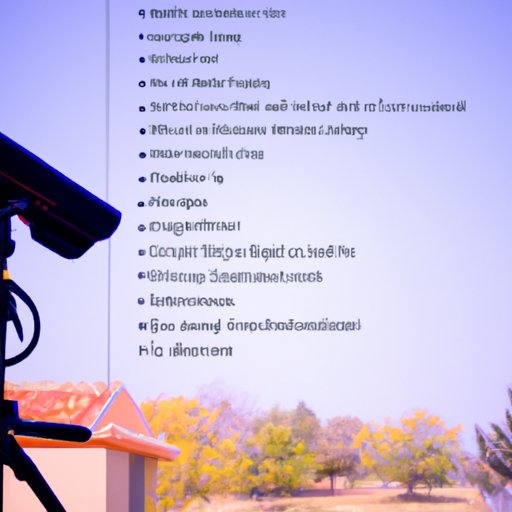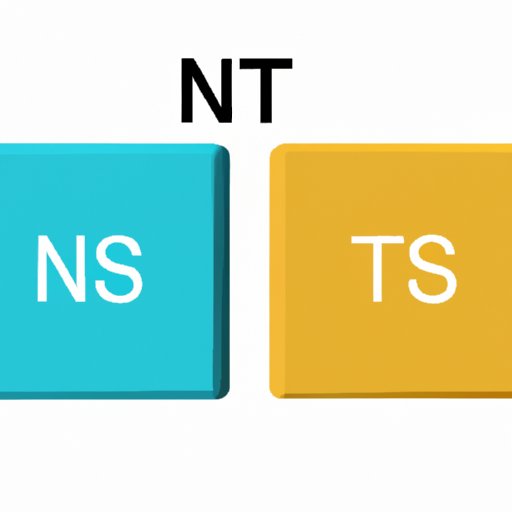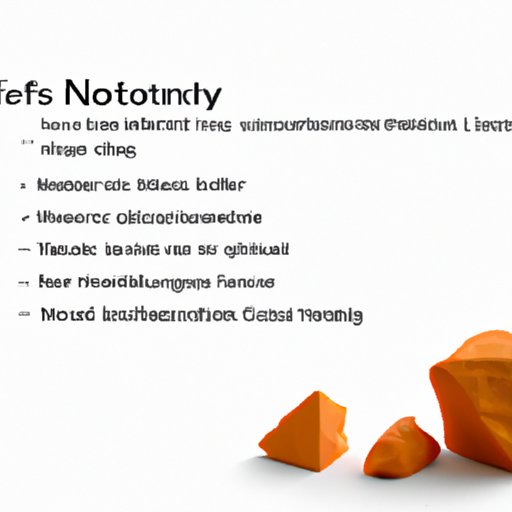Introduction
Non-fungible tokens (NFTs) are a type of cryptocurrency that has recently exploded in popularity. These tokens are unique digital assets that utilize blockchain technology for authentication and verification. They have become a popular way for people to invest in digital assets such as artwork, music, sports memorabilia, and collectibles. In this article, we will provide a comprehensive overview of NFTs, including an explanation of how they work, their use cases, the technology behind them, and the regulations surrounding them.
Explaining NFTs: What are Non-Fungible Tokens and How Do They Work?
Before we dive into the details of NFTs, it is important to understand what they are and how they differ from other cryptocurrencies. NFTs are unique digital assets that have been authenticated and verified using blockchain technology. Unlike other cryptocurrencies, such as Bitcoin or Ethereum, NFTs are not interchangeable. Each NFT is unique and cannot be divided into smaller parts, making them non-fungible. This means that each individual NFT has its own distinct value.
How Does an NFT Differ from Other Cryptocurrencies?
Unlike other cryptocurrencies, NFTs are not used as a medium of exchange or store of value. Instead, they are used to represent ownership of a digital asset. Each NFT contains information about the asset it represents, such as its owner, its history, and any other pertinent data. NFTs are also immutable, meaning that once an NFT is created, it cannot be changed or altered in any way.
How Do NFTs Work?
NFTs are built on top of blockchain technology. When an NFT is created, its characteristics and associated data are stored on a distributed ledger. This ledger is secured using cryptography, making it nearly impossible to alter or tamper with the data without authorization. The data stored on the ledger is then validated and authenticated using a consensus protocol, ensuring that the data is accurate and up-to-date.
A Beginner’s Guide to Understanding NFTs and Their Use Cases
Now that you understand the basics of NFTs, let’s take a look at some of the most popular use cases for these tokens. NFTs can be used for a variety of applications, including digital art, gaming items, tickets, collectibles, and much more.
Types of NFTs
NFTs come in a variety of forms, including:
- Digital art – Digital artworks are one of the most popular uses for NFTs. These artworks can range from traditional paintings to 3D models, and they can be sold as one-of-a-kind pieces or as part of a larger collection.
- Gaming items – In-game items such as weapons, armor, and vehicles are often tokenized as NFTs. These items can be bought, sold, and traded within the game, allowing players to customize their gaming experience.
- Tickets – Tickets for events such as concerts and sporting events can be tokenized as NFTs. This allows for secure transfer of tickets and ensures that tickets can only be used by their rightful owners.
- Collectibles – Collectible items such as trading cards and action figures can be tokenized as NFTs. This allows collectors to securely store and trade their items without the risk of counterfeiting.
Popular Use Cases for NFTs
The most popular use cases for NFTs include:
- Digital art – As mentioned above, digital art is one of the most popular use cases for NFTs. Artists can tokenize their artwork and sell it directly to buyers, eliminating the need for intermediaries such as galleries or auction houses.
- Gaming – NFTs are becoming increasingly popular in the gaming industry. Developers can tokenize in-game items, allowing players to buy, sell, and trade them in a secure and transparent manner.
- Collectibles – Tokenizing collectible items such as trading cards and action figures allows collectors to securely store and trade their items without the risk of counterfeiting.
- Tickets – Tokenizing tickets for events such as concerts and sporting events allows for secure transfer of tickets and ensures that tickets can only be used by their rightful owners.
- Real estate – Real estate can be tokenized and sold as NFTs, allowing investors to purchase fractions of property without having to go through the traditional buying process.

An Overview of the Technology Behind NFTs
NFTs are built on top of blockchain technology, which is a distributed ledger system that utilizes cryptography for security. This system is decentralized, meaning that there is no single authority that controls it. Instead, the network is maintained by a network of computers that work together to verify and authenticate transactions.
Blockchain and Distributed Ledger Technologies
Blockchain and distributed ledger technologies are the backbone of NFTs. These technologies allow for secure and transparent transfer of information between parties. All transactions are recorded on a public ledger, which is secured using cryptography. This ensures that all transactions are immutable and cannot be tampered with.

Smart Contracts and Decentralized Applications
Smart contracts and decentralized applications (dApps) are built on top of blockchain technology. These applications are programmed to execute certain tasks when certain conditions are met. For example, a smart contract could be programmed to automatically transfer funds to a seller when an item is purchased. This eliminates the need for intermediaries such as banks or lawyers.
Cryptographic Security
Cryptography is used to secure the data stored on a blockchain or distributed ledger. This includes private keys, passwords, and other sensitive information. Cryptography ensures that only authorized users can access the data and that the data is not tampered with or altered in any way.

The Pros and Cons of Investing in NFTs
Investing in NFTs can be a lucrative endeavor, but there are potential risks that should be taken into consideration before investing. It is important to do your research and understand the pros and cons of investing in NFTs before taking the plunge.
Benefits of Investing in NFTs
Investing in NFTs has several potential benefits, including:
- Low barriers to entry – Investing in NFTs requires little capital and can be done from anywhere in the world.
- High liquidity – NFTs can be bought, sold, and traded quickly and easily, making them highly liquid investments.
- Secure transactions – Transactions involving NFTs are secure and immutable, making them difficult to tamper with or alter.
- Potential for high returns – NFTs have the potential to generate high returns if the market is favorable.

Potential Risks Associated with Investing in NFTs
Despite the potential benefits of investing in NFTs, there are also potential risks that should be taken into consideration. These risks include:
- Price volatility – The price of NFTs can be extremely volatile, and prices can fluctuate rapidly.
- Lack of regulation – The regulatory landscape for NFTs is still evolving, and there is currently very little oversight or protection for investors.
- Counterfeiting – Due to the lack of regulation, NFTs are vulnerable to counterfeiting and fraud.
- Technical issues – NFTs are built on top of complex technologies, and technical issues can arise that may affect the value of the tokens.
How to Create and Sell Your Own NFTs
Creating and selling your own NFTs is relatively straightforward. In order to do so, you will need to set up a digital wallet, create your NFT, and then list it for sale on a marketplace. Here is a step-by-step guide to creating and selling your own NFTs.
Setting Up a Digital Wallet
The first step in creating and selling your own NFTs is to set up a digital wallet. A digital wallet is a secure place to store your NFTs and other cryptocurrencies. There are many different types of wallets available, so it is important to do your research and choose the one that best suits your needs.
Creating Your NFT
Once you have set up your digital wallet, you can begin creating your NFT. This process involves creating a digital asset, such as artwork or a collectible, and then tokenizing it. This process requires specialized software and programming knowledge, so it is important to do your research before getting started.
Selling Your NFT
Once your NFT is created, you can list it for sale on a marketplace. There are many different marketplaces available, so it is important to do your research and choose the one that best suits your needs. Most marketplaces charge a fee for listing your NFT, so make sure to factor this cost into your pricing.
Understanding the Regulations Surrounding NFTs
The regulatory landscape for NFTs is still evolving, and it is important to understand the laws and regulations that are in place. Currently, there is no global regulatory framework for NFTs, but many countries have begun to implement their own regulations. It is important to familiarize yourself with the regulations in your country before investing in NFTs.
Regulatory Landscape for NFTs
As mentioned above, the regulatory landscape for NFTs is still evolving. Currently, there is no global regulatory framework for NFTs, but many countries have begun to implement their own regulations. These regulations vary from country to country, so it is important to familiarize yourself with the regulations in your country before investing in NFTs.
Important Considerations for Investors
When investing in NFTs, it is important to keep the following considerations in mind:
- Understand the regulations – Make sure to familiarize yourself with the regulations in your country before investing in NFTs.
- “Do your own research” – As with any investment, it is important to do your own research before investing in NFTs. This includes researching the project, the team behind it, and the market conditions.
- Set realistic expectations – Investing in NFTs can be lucrative, but it is important to set realistic expectations. Prices can fluctuate rapidly, and there is always the risk of losing money.
Conclusion
Non-fungible tokens (NFTs) are a type of cryptocurrency that has recently exploded in popularity. These tokens are unique digital assets that utilize blockchain technology for authentication and verification. In this article, we provided a comprehensive overview of NFTs, including an explanation of how they work, their use cases, the technology behind them, and the regulations surrounding them. We also discussed the potential benefits and risks of investing in NFTs, as well as how to create and sell your own NFTs. It is important to do your research and understand the regulations before investing in NFTs.
(Note: Is this article not meeting your expectations? Do you have knowledge or insights to share? Unlock new opportunities and expand your reach by joining our authors team. Click Registration to join us and share your expertise with our readers.)
